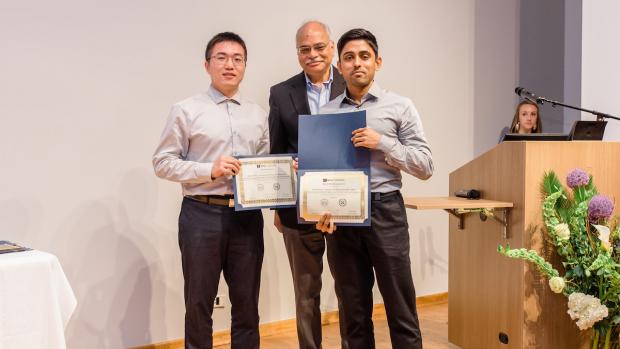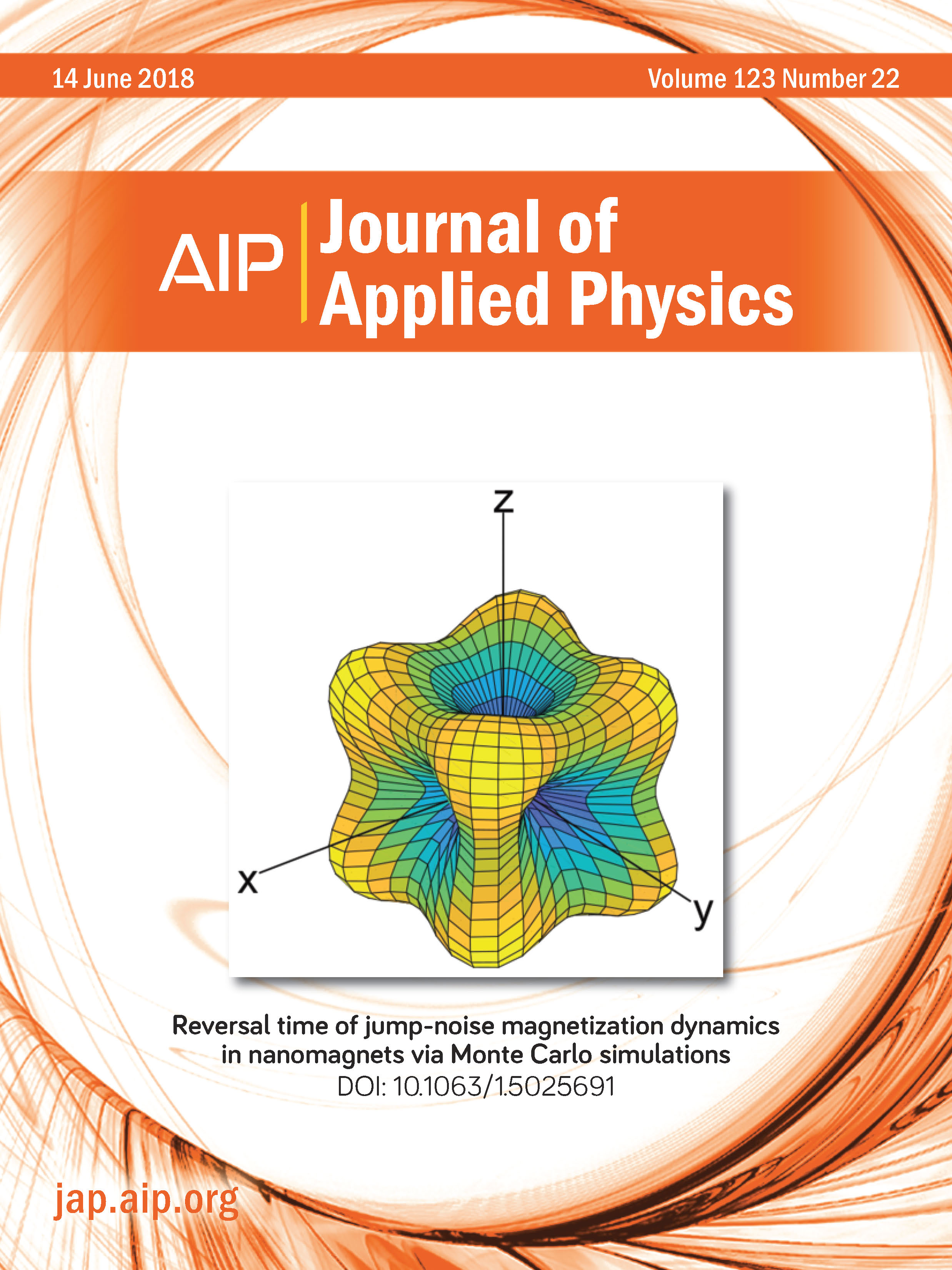Ph.D. candidate Arun Parthasarathy is attracting attention with his research on magnetism and spintronics

Arun Parthasarathy (right), recipient of the Dante Youla Award for Graduate Research Excellence, at the 2019 Commencement and Achievement Awards ceremony
Volume 123 of the Journal of Applied Physics, published in June 2018, boasts a cover that would not look out of place in a museum of modern art. The bulbous shape — rendered in bright shades of yellow, blue, and green and segmented by crisp black lines — actually depicts a cubic anisotropy energy landscape, with radial distance and brightness indicating the energy. (A ferromagnetic material is said to have magnetocrystalline anisotropy if it takes more energy to magnetize it in certain directions than in others.)
 Inside the journal, the illustration accompanies “Reversal time of jump-noise magnetization dynamics in nanomagnets via Monte Carlo simulations,” a paper by Arun Parthasarathy, a doctoral student in Tandon’s Department of Electrical and Computer Engineering, and his doctoral advisor, Assistant Professor Shaloo Rakheja.
Inside the journal, the illustration accompanies “Reversal time of jump-noise magnetization dynamics in nanomagnets via Monte Carlo simulations,” a paper by Arun Parthasarathy, a doctoral student in Tandon’s Department of Electrical and Computer Engineering, and his doctoral advisor, Assistant Professor Shaloo Rakheja.
Parthasarathy, who earned his undergraduate degree at the Indian Institute of Technology in Kanpur before coming to Tandon, explains that jump-noise is an example of a series of discrete events in which the average time between events is known, but the exact timing is random, and it can be used to model thermal effects in magnetization dynamics. Modeling thermal fluctuations is important because silicon-based complementary metal oxide semiconductor (CMOS) technology, which has thus far experienced incredible exponential growth, is approaching its fundamental limits, and finding other building blocks for computing is vital; with reiterating in the lab time-consuming and costly, accurate models are a boon to researchers hoping to study computing using magnetic circuits.
Parthasarathy’s work recently appeared in the prestigious journal again: “Dynamics of magnetoelectric reversal of an antiferromagnetic domain,” was published in March 2019. In it, he analyzes the speed and energy limits of the spatial mechanisms governing electrically controlled domain switching in antiferromagnetic insulators, and the study provides valuable insight into the performance of such materials for applications in ultra-low-power nonvolatile memory and logic processing.
Parthasarathy — who was this year’s recipient of the Dante Youla Award for Graduate Research Excellence in Electrical and Computer Engineering, among other prizes and grants — admits that his work can be difficult for laypeople to understand. "Since the 2007 Nobel laureates Albert Fert and Peter Grünberg discovered Giant Magneto Resistance, which involves small changes in magnetic fields creating major differences in electrical resistance, the phenomenon has had an impact on electronics,” he says. “So even if the average computer user doesn’t grasp the physics involved, everyone benefits from increasingly more efficient and cost-effective methods of computing.”




